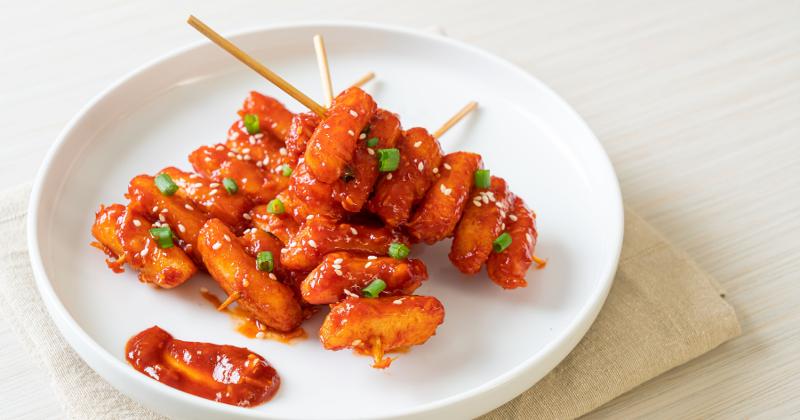
Short of hopping on a plane, taking a look at menus in other parts of the world can hold clues to food and drink trends that are poised to hit our shores. Technomic’s 2024 Global Restaurant Trends Forecast offers a way to jump on the most relevant ones and stay ahead of the competition.
So what’s the scoop on the top cuisines, flavors, ingredients and concepts outside our borders? Here’s a glimpse into the next wave in food and drink.
Funky Korean
Gochujang and Bimimbap have moved into the mainstream, fueled by more adventurous and younger eaters. So what Korean foods are waiting in the wings to tempt our taste buds?
Technomic predicts that trendsetting independents, food trucks and popups are ready to introduce less-familiar offerings—like K ramen. We all know Japanese-style ramen, but K ramen may be new to American diners. K ramen is the name for Korean packaged instant noodles, and when prepared, it generally has a spicier flavor profile than the Japanese version. It’s an essential ingredient in Army Stew, a South Korean stew (jjigae) that also includes Spam, beans, ham, sausage, gochujang and American cheese. These were all off-the-shelf ingredients that were readily available during the Korean War in the early 1950s, hence the name. Now Army Stew is resurfacing as a comfort food.
Other trending Korean specialties include Tteokbokki Rice Cakes, often served on skewers coated with spicy sauce; Buldak Chicken, spicy grilled chicken topped with a layer of melted cheese; Kimbap Rice Rolls (seaweed rice rolls); and Gopchang (beef small intestines), which go into a stew or casserole.
Plant-based from afar
Technomic claims that plant-based is now entrenched as a global menu influence, and will continue to trend. But stay tuned for a few changes. Meatless proteins, including tofu, tempeh and cig kofte—Turkish bulgur “meat” balls—are making deeper inroads on menus in international applications.
The biggest development in chains will be the elimination of an upcharge for milk alternatives in coffee and tea. Coffee concepts in Germany, the U.K. and South Africa are offering customers the option of free almond milk, oat milk and other nondairy alternatives with their beverages.
Things get personal
Solo dining is trending here in the States and everywhere else, and there’s a growing demand to offer menus geared to single-person meals. Casual-dining restaurants often accommodate solo diners at the bar with food and drink specials, but limited-service concepts are starting to get with the program, too. Think pizza downsized into handhelds such as melts, paninis and calzones.
Look for restaurants to develop creative dine-in experiences that are better tailored to single-person occasions. One amenity that operators will more aggressively market next year is pet-friendly dining spaces and menus.
One-stop shopping
Some U.S. coffee cafes and all-day breakfast-lunch concepts have menus that attract guests at off hours. But in other parts of the world, restaurants are designed to satisfy more than one craving in a single stop. Doughnut spots are adding pizza ranges, chefs are curating bowls at build-your-own chains and frozen yogurt concepts are offering specialty coffee drinks. China’s Mixue Ice Cream & Tea is a pioneer with its proprietary ice cream line side-by-side with coffees and teas.
Restaurants are also crafting menus for late-night and all-night guests with happy-hour drinks and snacks and inventive breakfast items.
5 trendlets to watch
Not large enough to be called full-fledged waves, these are some of the ripples that are starting to flow in from around the world.

Ube, a type of yam, infuses doughnuts with a purple hue. | Photo: Shutterstock
•Drinking yogurts from China and Southeast Asia. These use yogurt as the base for mix-ins like coffee and avocado. It’s a category that’s expected to expand.
• Demand for halal certification is growing. Forbrands expanding to the Middle East and parts of Africa and Asia, getting halal-certified is table stakes.
• Aged salts are a chef’s secret weapon. Smoked salts are also emerging as a kitchen staple.
• Vegetables flavor desserts. Expect sweet corn, avocado and ube (purple yam) to find their way into the pastry kitchen.
• Food on a stick. Yakitori, satay and other meats served on sticks will ascend on the international culinary front.
Members help make our journalism possible. Become a Restaurant Business member today and unlock exclusive benefits, including unlimited access to all of our content. Sign up here.